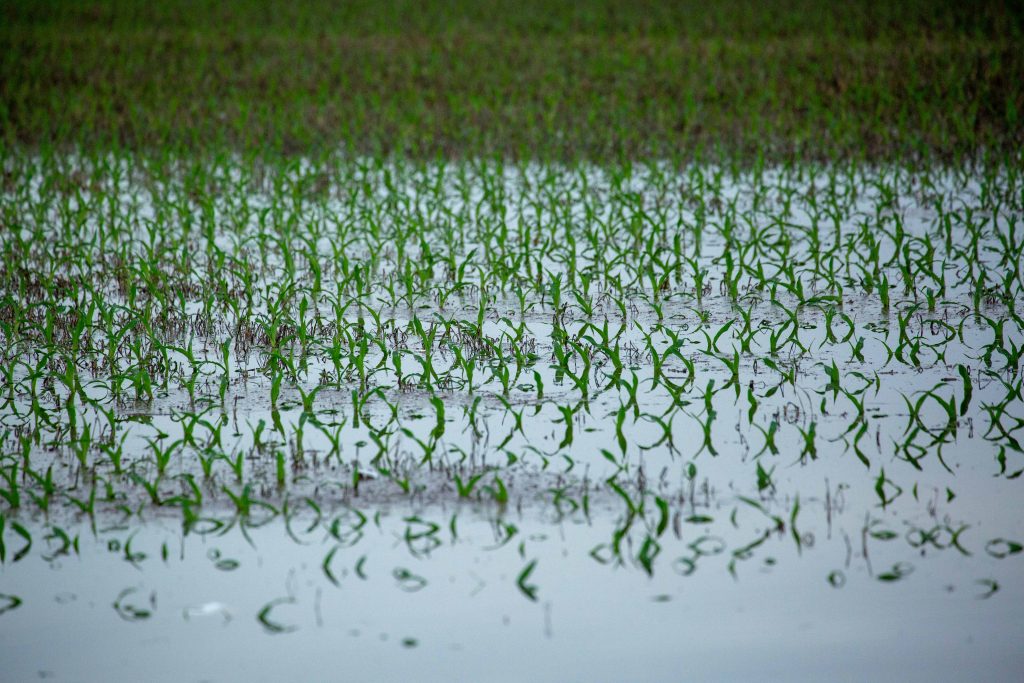
Facebook Twitter Instagram YouTube
Written on: May 13th, 2020 in Education and Outreach
By Maggie Pletta, DNREC’s Division of Climate, Coastal and Energy

Delaware is known for its ability to tackle complex problems by bringing its residents together to work out solutions. Among this year’s problems: planning how the state will respond to climate change.
The impacts of climate change vary around the globe, but in Delaware, the changes we are already experiencing include increased temperatures and rising sea levels. These impacts are expected to continue or worsen. Moreover, climate scientists anticipate precipitation patterns will also change, with more frequent intense storms hitting the state. These changes will have major impacts on human health and safety, our natural resources (like wetlands), agriculture, and transportation infrastructure.
The annual average temperature in Delaware has risen 2 degrees since 1900, and the best available science projects that by 2050, the average temperature in the state will be between 2.5 and 4.5 degrees warmer than it is today. Increased temperatures directly threaten human health in a variety of ways including heat rash, heat cramps, heat exhaustion, and heat stroke. All can aggravate underlying health conditions and cause the heart, kidneys, lungs, and other internal organs to fail. But human health is not the only thing impacted by high temperature; roadways can also heave and buckle during heat waves, damaging critical infrastructure.
Records at the Lewes tide gauge indicate that sea level has risen more than a foot over the last century and are projected to rise an additional 9 to 23 inches by 2050. As sea level continues to increase a variety of impacts occur, most notably flood damage to habitats, roads, and infrastructures located in low-lying areas. Other impacts include increased erosion rates and saltwater intrusion in coastal soil and water resources that can render them unusable for agriculture and drinking water.

While the most recent climate trends do not show an increase in precipitation and extreme weather events, it is projected there will be noticeable changes in the future. It is projected there will be a 5% increase in average yearly precipitation and increased frequency and intensity of extreme weather events by 2050 and a 10% increase in precipitation amounts by century’s end. Changes in precipitation, including extreme rainfall events, will affect agriculture by damaging crops, altering growing seasons, and increasing crop disease pressure.
Over the course of 2020, the state is working to create the Delaware’s Climate Action Plan, a framework for how Delaware can address the causes and consequences of climate change in the decades ahead. The plan will build on years of research, plans, and commitments, such as the state’s sea level rise planning process and Delaware’s participation in the Regional Greenhouse Gas Initiative and the U.S. Climate Alliance.
The plan will map out actions to reduce greenhouse gas emissions from various economic sectors, including transportation, industry, and energy production — the three leading greenhouse gas emitters in the state.
Additionally, the plan will lay out the actions state agencies can take to support the state in adapting to climate change. These actions will be shaped by the best adaptation practices from across the world.

In developing Delaware’s Climate Action Plan, DNREC’s Division of Climate, Coastal & Energy (DCCE) hosted three public workshops in early March to learn of Delawareans’ experience with climate impacts and to gather input on how the state can best address the causes and consequences of climate change. More than 250 people attended the workshops.
The Division also held a technical advisory workshop in March with representatives from the transportation, buildings, energy, and industrial sectors to solicit ideas for reducing greenhouse gas emissions. Summary reports for the public and technical advisory workshops will be posted in the coming weeks on declimateplan.org.
DCCE’s Climate Action Plan team is continuing to shape the plan during these unprecedented times, working with technical consultants to put together a comprehensive greenhouse gas analysis that will examine which statewide strategies may be most effective in reducing the state’s carbon footprint.
The Climate Action Plan team is also actively engaging with stakeholders from across DNREC and other state agencies to identify possible adaptation actions these agencies can take as part of the final plan. These ideas for adaptation actions will be presented to the public later this year for feedback. Details on how to provide feedback will be posted online at declimateplan.org, on our Facebook and Twitter, and via the DCCE Newsletter.
For the plan to be successful, we need to hear from you, on what actions you want the state to take to address climate change.
You can provide feedback and your input in a variety of ways:
Also, be sure to follow our project website at declimateplan.org or our Facebook and Twitter pages for the most up-to-date information. With your feedback and support, we aim to create a plan that shapes a future where individuals, businesses, communities, and institutions can deal with extreme weather, harness clean energy, breathe fresh air, and live healthier lives.